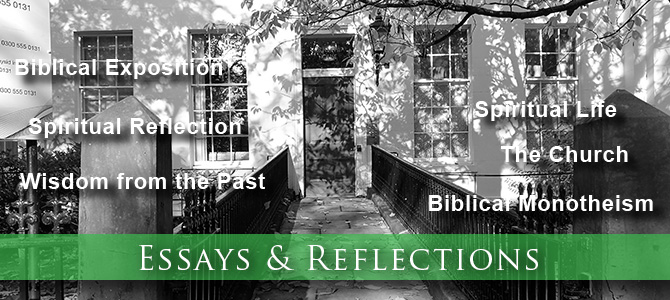You are here
Relating to the Death and Resurrection of Jesus
Click on the picture for the full list of essays
Is There a Wrong Way
of Relating to the Death
and Resurrection of Jesus?
Bentley C.F. Chan
Recently there has been much coverage of the fire that damaged Notre-Dame de Paris, one of the great churches in Christendom. Back in 1997, I gazed at its majestic exterior from a tourist bus but didn’t set foot inside. The church forms the setting of Victor Hugo’s novel of the same name, better known in English as The Hunchback of Notre-Dame. I read the novel as a teenager, so I had already “seen” this church with my mind’s eye. It may have been an inspiration for the elegant Notre-Dame church in my home town, Montreal. The photo of the Montreal church in the following collage was taken by me in 2014.

From the recent news reports, I learned something else about Notre-Dame de Paris: It has a few purported relics of Jesus, including the crown of thorns and a crucifixion nail, both of which survived the fire. These are shown in the photos above. The nail is not clearly visible because it is encased in a crystal enclosure.
I am not arguing for or against the authenticity of the nail and the crown of thorns, except to mention that the Catholic Encyclopedia (article Holy Nails) expresses skepticism about the former when it says: “Very little reliance can be placed upon the authenticity of the thirty or more holy nails which are still venerated … in such treasuries as that of Santa Croce in Rome, or those of Venice, Aachen, the Escurial, Nuremberg, Prague, etc.”
Don’t get me wrong. I am not opposed to relics which purportedly have to do with the events surrounding the death of Jesus. If their authenticity is ever confirmed beyond historical doubt, I might want to know more about them. After all, I have visited the Church of the Nativity in Bethlehem and the Church of the Holy Sepulchre in Jerusalem which are, respectively, the purported sites of the birth and the burial of Jesus. And my favorite museum in the world is the British Museum for its unsurpassed collection of historical artifacts.
Yet I am also mindful of what the apostle Paul says in 2 Corinthians 5:16:
From now on, therefore, we regard no one according to the flesh. Even though we once regarded Christ according to the flesh, we regard him thus no longer. (ESV)
The phrase “according to the flesh” occurs twice in this verse, and is a literal translation of the Greek kata sarka. In the Bible, it is found only in Paul’s letters, with the exception of John 8:15 where Jesus says, “You judge according to the flesh. I judge no one.”
This literal rendering, “according to the flesh,” for 2 Corinthians 5:16 is found in ESV, NASB, and NKJV. But because the expression “according to the flesh” is unfamiliar in English, it is also rendered in other ways:
From now on, therefore, we regard no one from a human point of view; even though we once knew Christ from a human point of view, we know him no longer in that way. (NRSV)
So from now on we regard no one from a worldly point of view. Though we once regarded Christ in this way, we do so no longer. (NIV)
In these two versions, kata sarka is rendered “from a human point of view” or “from a worldly point of view”. Other renderings in other versions are “after the flesh” (KJV), “from an outward human point of view” (NET), “in a purely human way” (HCSB), and “by human standards” (NJB).
All these have the same basic meaning: to regard someone from a human perspective or by human standards.
We won’t study kata sarka in detail, but will summarize how Paul uses it in his letters:
- First, it can mean physical descent: Jesus was born a son of David according to the flesh (Rom.1:3). Abraham is the forefathers of the Jews according to the flesh (Rom.4:1).
- Second, it can refer to something that is contrary to the principle of spirit or Spirit: We walk not according to the flesh but according to the Spirit (Rom.8:4). Those who are according to the flesh set their minds on the things of the flesh, but those who are according to the Spirit, the things of the Spirit (Rom.8:5).
- Third, it can mean to regard someone by human standards. For example, not many in the Corinthian church are wise or powerful or noble according to the flesh (1Cor.1:26). A related meaning is one’s status within a human relation: slaves are to obey those who are their masters according to the flesh (Eph.6:5).
The third of these meanings—to regard someone by human standards—is more or less the one chosen by most Bibles for 2 Corinthians 5:16. It certainly represents the best and most natural understanding of this verse. But Paul infuses deeper spiritual meaning into this verse when he speaks of a “before” way and an “after” way of looking at people. The “before” way stems from the old and human way of thinking, the “after” way stems from our new life in Christ, as new creatures. This comes out in the wider context of this verse:
14 For the love of Christ controls us, because we have concluded this: that one has died for all, therefore all have died; 15 and he died for all, that those who live might no longer live for themselves but for him who for their sake died and was raised. 16 From now on, therefore, we regard no one according to the flesh. Even though we once regarded Christ according to the flesh, we regard him thus no longer. 17 Therefore, if anyone is in Christ, he is a new creation. The old has passed away; behold, the new has come. (2 Corinthians 5:14-17, ESV)
We see several things from this passage. First, a radical transformation takes place when we become a new creation (or new creatures) in Christ (v.17). Second, the transformation affects the way we look at Christ, that is, no longer according to the flesh (v.16). Third, it affects the way we look at people in general and our fellow Christians in particular, that is, no longer according to the flesh (v.16). Fourth, it affects the way we conduct our lives, no longer living for ourselves but for Christ (v.15).
We no longer look at Christ according to the flesh. If we are fixated on the physical aspects of Jesus (e.g., the relics of his death, or his facial appearance in the Shroud of Turin) to the neglect of the spiritual, it is a danger sign that we are not new creatures in Christ. If we venerate the relics of Jesus but without a surrendering of our lives to him, we would be relating to him in a carnal way of thinking.
Some of us may regard the veneration of relics as crude religiosity, a fixation on Christ according to flesh, but a related thing takes place in something more sophisticated: a fixation on the academic study of the historical Jesus. This area of study attempts to reconstruct the life and the words of Jesus by historical, scientific, and largely non-supernatural means. It is more focused on the historical Jesus, not on the resurrected Jesus, nor the Jesus who is sent from the Father, nor the Jesus who is our Lord and Savior. Again, don’t get me wrong. I am not opposed to the academic study of the historical Jesus per se, having bought a few books on this topic. But many have gone deep into this area of study only to compromise their faith in Jesus, their commitment to Jesus, and their proclamation of Jesus.
We no longer regard Christ according to the flesh, but in a new way: Christ as our Lord and Savior (2Pet.3:18), Christ as our life example (1Pet.2:21), Christ as our life (Gal.2:20; Phil.1:21), and even Christ as our elder brother (Rom.8:29; Heb.2:11).
We no longer regard people, in particular fellow Christians, according to the flesh: no longer by a person’s social standing, or intelligence, or educational attainment, or physical appearance, or preaching eloquence, or natural likeability. We now measure a fellow Christian by his or her spiritual qualities and standing. And just as we regard Christ as our elder brother, we regard our fellow Christians as our brothers and sisters.
Many years ago, when I was attending a Chinese and English speaking church in Ottawa, a group of troublemakers launched a long and hostile campaign to fire a pastor for his soft-spoken style and inability to speak English eloquently (he was more fluent in Chinese than English). When I say “troublemakers,” I don’t mean that they were outwardly crude and belligerent. In fact they were regarded as educated and “spiritually mature” lay Christians. Their hostile campaign against the pastor, which included some underhanded strikes, appalled me because he had a genuine love for the sheep, sometimes expressed in secret and self-sacrificial ways.
So there is a carnal way of looking at this pastor (according to his outward human abilities), but also a spiritual way of looking at him, namely, in the way that Christ would look at him, especially in the light of the parable of the sheep and the goats.
Conversely, some false preachers have a large following on account of their human eloquence and because an element of their message appeals to carnal thinking.
As we commemorate the death of Jesus and celebrate his resurrection, may our new life in Christ give us a new way of looking at him, our Lord and Savior, and at his people, our brothers and sisters in Christ.
(c) 2021 Christian Disciples Church

